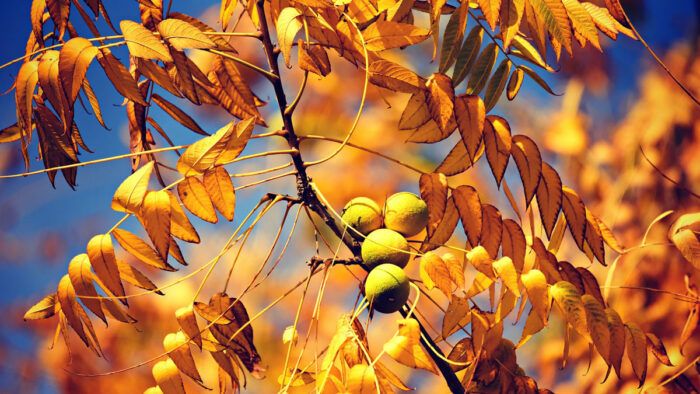Q&A: Planting for the future
Would it be better to plant saplings in the woods or to plant them evenly spaced in an open area, and if so, what spacing would be optimum?
From issue #106–May/June 1994
I have about 50 black walnut seedlings that grew from nuts I planted last fall. I intend to transplant them this year elsewhere on my 30-acre woodlot. Could you tell me whether it would be better to set them out here and there in the woods or to plant them evenly spaced in an open area, and if so, what spacing would be optimum? My goal is to produce tall, straight trunks to be made into lumber. Of course, I realize that I won’t be the one who makes use of it, but wouldn’t it have been nice if someone had planted a few walnuts for me, say, 75 years ago? -Alfred M Thornton, Hogansville, Ga.
Jon Arno replies: On the surface, your question would appear to be a simple matter of silviculture, but it is actually very complicated. There are pros and cons to both approaches, which might suggest a more careful honing of your objectives. To coax walnut trees to grow tall and produce straight, clear trunks, they should be crowded by competing vegetation. However, to maximize their rate of growth, the competition should be removed in stages as the walnut trees mature. Planting them in an existing woodlot will provide intense, if not overpowering competition. Their rate of growth will be stunted, and many of them will fall victim to rodents and other wildlife. But it will be possible to spread your 50 seedlings over a greater area, and looking centuries into the future, this strategy should provide a higher potential for self-propagation, generation after generation.
The alternative approach offers more opportunity to control the process and greater certainty that you or your immediate descendants will realize some economic return. To maximize the rate of growth while stimulating the trees to produce straight trunks, they should be planted on thoroughly plowed land in rows 4 ft. to 6 ft. apart and at 4-ft. to 6-ft. intervals. It is important to keep the planting area cultivated and free of weeds for the first few years to give the seedlings a good start. Also, the application of fertilizer and a temporary, small meshed fence will help stimulate growth and keep wildlife out. Walnut trees grow rapidly for the first 10 to 15 years but slow down once they begin to produce nuts. As the trees mature to the point that the original spacing is too confining, the stand should be thinned by removing every other tree or by selectively culling out the least promising specimens. There is no finite timetable for this process in that it depends upon growing conditions and climate. Faster culling will result in greater nut production, but allowing the competition to intensify until the growth rate is noticeably impaired will ultimately yield higher-quality timber. With walnut, the desire to see rapid growth must be tempered by the realization that it takes this species a great deal of time to convert its white sapwood to rich, dark brown heartwood. Given the choice, I would favor the controlled planting approach. Even if lumber is the ultimate objective, the nut crop is a definite plus, and several decades down the road, some of the nuts can be used to plant a few walnut trees in an established woodlot. Chances are, though, the squirrels will do that for you.
-Jon Arno is a wood technologist and consultant in Troy, Mich.
editorial note: We came across this in the archive and thought it was worth sharing online. If you enjoy archive articles like this, let us know in the comments and we’ll share more. -Ben Strano



















Comments
Yes, I like archive articles like this about planting trees among other things.
Yes, love it. Connection of woodworking to other fields of expertise on which it depends--silviculture, sustainable forest management. Love the ecological principles illustrated here. Reminder that trees are living organisms sharing the planet with us.
Timely article for me as I was looking to plant some white oak and hickory saplings this year. Thank you.
Alfred, if you're out there, it's been 27 years. How are the trees doing?!
Useful information for me, as well. Also would be helpful to know of sources for quality hardwood saplings. I believe that we are rapidly approaching the time to place orders for Spring delivery and planting.
Please keep these coming! I like seeing old articles that I wouldn't stumble across in my normal search results.
Also, I think a "Random Archive Article" button would be fun and I would click on it a lot.
Thank you! I've been asking for random buttons for years. Nobody but me thinks it's a good idea!
Log in or create an account to post a comment.
Sign up Log in